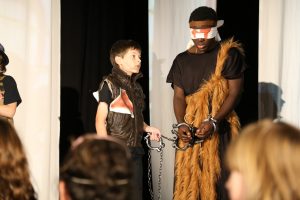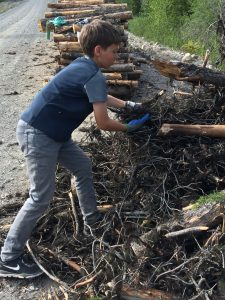Your Honour, I want to tell you about the day in March that I stood at the gates outside of Kinder Morgan attempting, as the evidence has accurately established, to block access to the construction of a pipeline that I oppose.
The police records and the Crown’s argument tell one side of the story. I’m grateful for your willingness to hear the other.
To be honest I had rather heroic ideas about my actions. I have a 15 year-old son, Oliver, and a 17 year-old daughter, Abigail, and they had become discouraged about their future. It seemed that every day on the news there was another development (You know the headlines): the collapse of the bee population worldwide, the demise of the Great Barrier Reef, the breaking up of the polar ice caps, extreme weather destroying homes and neighbourhoods, the anticipated extinction of orangutangs within the next 10 years. And so on.
There are many things a parent can endure, as I’m sure you can appreciate your Honour, but watching your kids lose hope is not one of them.
So, simply put, rather than sit passively by I decided I would do something to empower them to reclaim their future. I had read recently that the civil disobedience toolkit has been lost to a whole generation in the west where hard-won liberties are now so taken for granted we naively presume right will prevail. So I set out the morning of March 24 to demonstrate non-violent protest in action (though, truth be told, I hardly knew what I was doing myself.)
Yet isn’t it the way with life: just when you think you are way out in the lead you discover that there are others with a knowledge and experience base who have been there long (sometimes centuries!) before you ever appeared on the scene.
We were a big group that day (50 or 60 I believe). It was biting cold and then it started to snow: huge flakes, the size of saucers (you’ve probably seen the footage). The snow caked on our heads and soaked through our clothes to the bone. No one had come dressed for snow.
And that’s when a man by the name of Stacey, a self-identified Anishinaabe ally of the Tsleil Waututh, began walking back and forth in front of us in his toque and grey sweats and work boots, like an unlikely commander of a legion. And he started to play his drum for us and sing us the resistance songs of his people. And when our teeth began to chatter he told us jokes and laughed with us. And when we could no longer feel our fingers and toes he walked among us passing out warm soup and bread.
And the day dragged on and as our spirits began to flag, an indigenous woman, whom I believe you have met, stood up on a ledge just to the right front of where I was. She needed a cane to balance her frail frame which was wracked by a lifetime of hardship that I’m sure I can’t begin to comprehend. Yet with her free hand she held up an eagle feather high into the air above us. I can’t tell you what she meant by this gesture but I can tell you how I experienced it: as an act of protection, as though to care for us and give us the strength we would need for the stand we were taking.
And when the police arrived, they positioned themselves in a line in front of us to begin their arrests. It was at this point that an indigenous man wearing a felt bowler hat stepped out from the crowd of supporters. I learned later that he is an artist and activist who goes by the name Ostwelve. And he planted himself eye-to-eye in front of each of the officers in turn and urged them to re-consider their options: “History doesn’t have to unfold like this.” I overheard him implore. “None of us, not me, not you, has to follow the script life has handed us.”
As the hours passed I was worried about my daughter who had come to support me and as far as I knew was standing by herself lost in the crowd in the snow and the cold. And I asked for news on her and word came back to me that she had been invited by the Tseleil Waututh youth leader, Cedar George to join a group of indigenous youth for a special youth-focused ceremony in the shelter and warmth of the Watch House.
And I thought “Who ARE these people?” From what I know of the historic record all we’ve ever done is swindled, robed, bribed, and used whatever means available to us to take their land out from under them.
In the days following my arrest it became my quest to find an answer to this question. I went to the Tsleil Waututh camp by the Watch House on the soccer field to find out.
If you haven’t already done so I hope you get the chance to visit the Watch House, Your Honour. I think you’ll be surprised as I was surprised to discover that this protest-based surveillance camp, before it is anything else, is a place for spiritual grounding.
The first thing you’ll be invited to do on entering the camp is to offer prayer at the Sacred Fire. It’s an act that starts you down the road of reaffirming your connection to the Creator and to all living things (animate and inanimate alike). And the more time you spend at the camp the more you will remember what it means to put human relationships before personal acquisition and the health of the earth before material comforts.
I won’t take any more of your time, Judge Affleck. My account has come full circle. I crossed the injunction line not to bring discredit to the court but to bring hope to Abigail and Oliver.
I believe we found the hope we were looking for though not as we expected. It comes from the knowledge that at the forefront of the struggle there are indigenous leaders, not only here in our city, but across our country and around the world who understand that caring for the earth is a sacred duty and comes at a great cost.
Regardless of the penalty you have assigned me today, my actions will have cost me little more than a sliver of my white privilege. In contrast the cost to the leaders I met on the mountain that day is incalculable. They have laid everything on the line for the sake of the struggle. They are the true heroes. It has been an honour to stand with them.
Post script: I pleaded guilty on June 26, 2018 and was sentenced to 25 hours community service. The standoff on the mountain continues. Click here to volunteer at the Watch House.




 n on stretchers from the field of battle.
n on stretchers from the field of battle.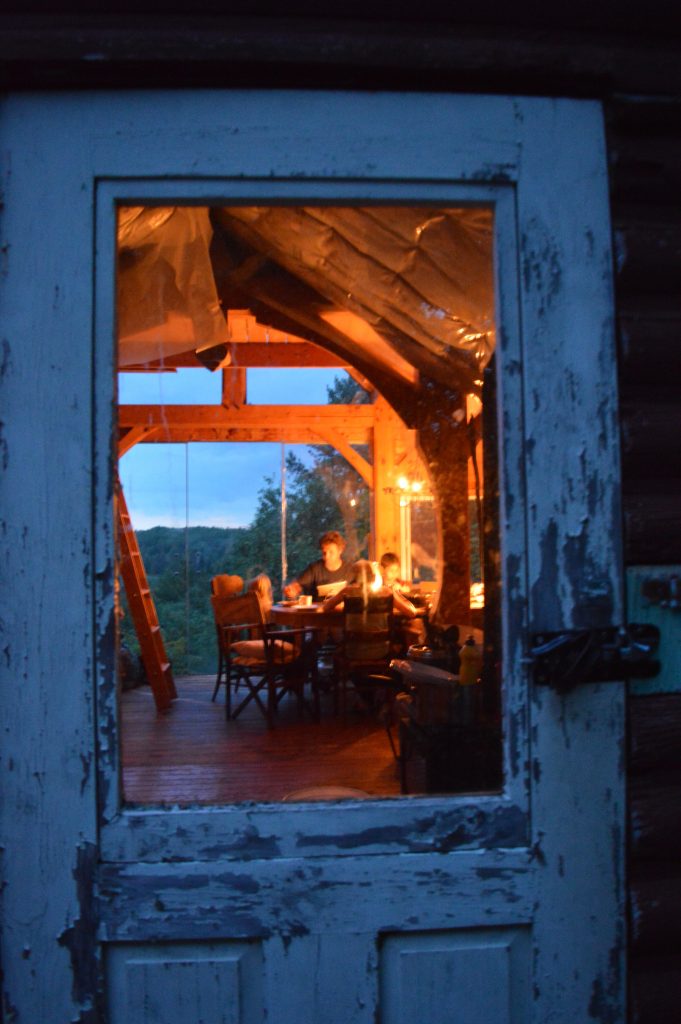
 Grassroots Ranch in Maple Ridge is run by Deb Murray. At 62, with her tell-it-like-it-is, denim-wearing, boot-kicking, tough-talking manner Deb is the closest I’ve come to a flesh-and-blood cowboy this side of the Rocky Mountains.
Grassroots Ranch in Maple Ridge is run by Deb Murray. At 62, with her tell-it-like-it-is, denim-wearing, boot-kicking, tough-talking manner Deb is the closest I’ve come to a flesh-and-blood cowboy this side of the Rocky Mountains. was so bruised I couldn’t sit properly for days. From the start Deb wanted me to learn to ride from my legs. “All communication with your horse should come from your legs” she said.
was so bruised I couldn’t sit properly for days. From the start Deb wanted me to learn to ride from my legs. “All communication with your horse should come from your legs” she said.
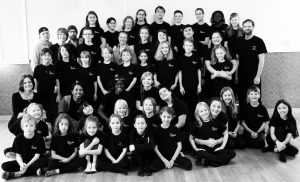 As a program of Grandview Calvary Baptist Church the Eastside Story Guild mandate is to put Bible stories to the stage in way that makes sense of faith in a post-modern world.
As a program of Grandview Calvary Baptist Church the Eastside Story Guild mandate is to put Bible stories to the stage in way that makes sense of faith in a post-modern world.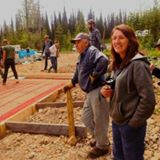 Unist’ot’en leader,Freda Huson, established the blockade in response to a proposed pipeline corridor slated to cut across unceded Wet’sewet’en territory. In a second strategic move she invited native and non-Native allies from across the province and around the world to join her in building a healing centre on the GPS coordinates of the proposed pipeline.
Unist’ot’en leader,Freda Huson, established the blockade in response to a proposed pipeline corridor slated to cut across unceded Wet’sewet’en territory. In a second strategic move she invited native and non-Native allies from across the province and around the world to join her in building a healing centre on the GPS coordinates of the proposed pipeline.